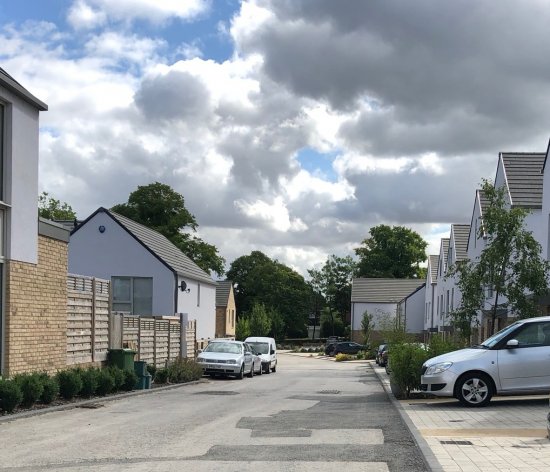For many years local highway authorities have supported the use of shared use roads within town centres and within housing developments.

In the case of housing developments this has allowed for the more efficient use of land, effectively reducing the amount of land required for the access road.
Following a Department for Transport (DfT) recent publication - 'The Inclusive Transport Strategy: achieving equal access for disabled people', local transport authorities have suspended guidance which formally allowed the use of shared use roads.
Please note: We have published an update to this blog, which monitors the reaction of highway authorities.
Our transport consultants - Cotswold Transport Planning confirm that:-
“The Department for Transport (DfT) wrote to Local Highway Authorities on the 25th July 2018 advising of the publication of the Inclusive Transport Strategy 2018 and have requested that highway authrorities pause the introduction of new shared space schemes. The Local Highway Authority will not be agreeing any shared space schemes at Planning or Technical Approval stage at the moment until further advice and updated guidance is published. The concern is that shared space is not in the interests of disabled people who are a protected group in the Equalities Act and find it difficult to navigate level surfaces when the kerb between the road and pavement is removed."
This position is also supported by the newly published National Planning Policy Framework (NPPF) Paragraph (July 2018) 110 (a), (b) and (c) of which confirms:
(a) “give priority first to pedestrians and cycle movements…..”
(b) “address the needs of people with disabilities and reduced mobility in relation to all modes of transport….”
(c) “…. minimise the scope for conflicts between pedestrians, cyclists and vehicles….”
In discussion with the local highway authority Cotswold Transport Planning have ascertained that:
“At the present time it is the position of the Local Highway Authority that shared surface designs are contrary to Paragraph 110 of the NPPF unless it can be robustly demonstrated how these requirements have been addressed.”
David Jones, Head of Planning at Evans Jones Ltd commented that: "this sudden change in direction will have significant implications for sites which have not as yet been approved, and in some instances for schemes which have been permitted (planning approval) but technical approval of the highway design has not been issued."
This could result in some sites being undevelopable, as there will be insufficient space available to accommodate a standard road layout with carriageway with 2.0m wide pavements to either side.
At this stage, It is unclear whether this change of policy applies to non-adopted private drives servicing typically 2-5 dwellings. My view is that the policy change would not apply to private drives.
The guidance which has been withdrawn; ‘Local Transport Note 1/11’ and ‘Manual for streets Gloucestershire’ supported the use of shared use highways. Private drives which have always been permissible have never required provision of separate pavements. In my opinion it would be perverse for the withdrawal of the aforementioned documents to now require that private access drives serving 2-5 dwelling should have pavements separated from the drive.
It remains a possibility that some highway authorities could take a ‘hard line’ on this point and seek separate pedestrian pavements/paths to every development whether it be a single dwelling or multiple dwelling scheme. Developers should thus proceed with caution at this stage.
For further information upon the newly published NPPF 2018, please contact us or read our update upon policy changes brought about by the new Framework.
